First thoughts: iPhone 11, Pro and iPhone Pro Max vs Samsung Galaxy S10e, Galaxy S10, Galaxy S10+
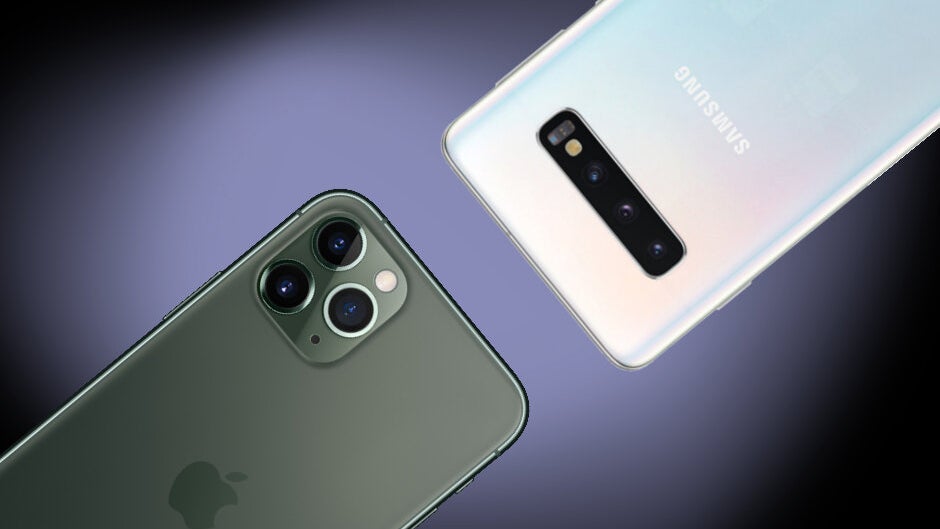
It’s insane to think where we’ve arrived in the smartphone world. In their aim to cover as many tastes and a wide variety of budgets, manufacturers have long abandoned the idea of having just The One flagship phone. Instead, they have a few sibling flagships — released at the same time and covering different needs and price ranges.
Just last year, Apple made the ambiguous customer’s life a living hell by releasing a total of 3 iPhones together. Then, Samsung followed suit by dropping three different Galaxy S10 phones (not counting the 5G model and don’t even get me started on the Note 10 series). Now, Apple is bombarding us with three new models yet again and you may be sitting there, wondering “Do I want one of these new iPhones or one of the Galaxy S10 phones?”. Either that or you are here for the unavoidable controversy, which ensues when a high-class Android phone clashes with the iPhone in a piece that’s supposed to be informative, but you know deep down inside that it’s probably riddled with opinions.
In any case — let’s talk about the new iPhones vs the fairly new Galaxies!
Alright, so it’s always been a bit weird to compare hardware between iPhones and competitors. Apple, obviously, uses its own chips — the Apple A13 Bionic in the case of the iPhone 11 — and they’ve always been stellar in terms of performance. The Galaxy S10 series use a Qualcomm Snapdragon 855, which is also great… not “as” great, but a pretty powerful system-on-chip none the less. We don’t have any benchmarks for Apple’s new phones yet, but here’s how the iPhone XS’s chip compared to the Galaxy S10:
We don’t know how much RAM the new iPhone pack just yet, but here’s some info from the past. The iPhone XR had 3 GB of RAM, while the iPhone XS and XS Max had 4 GB of RAM. Chances that they would get any big upgrade this year are slim. The Galaxy phones… well, they go big — 8 GB RAM on the starting tiers for all of them.
But here’s the crux of the situation — iOS and Android treat RAM very, very differently. So, it’s kind of hard to compare the raw specs as they are. But that segues perfectly into:
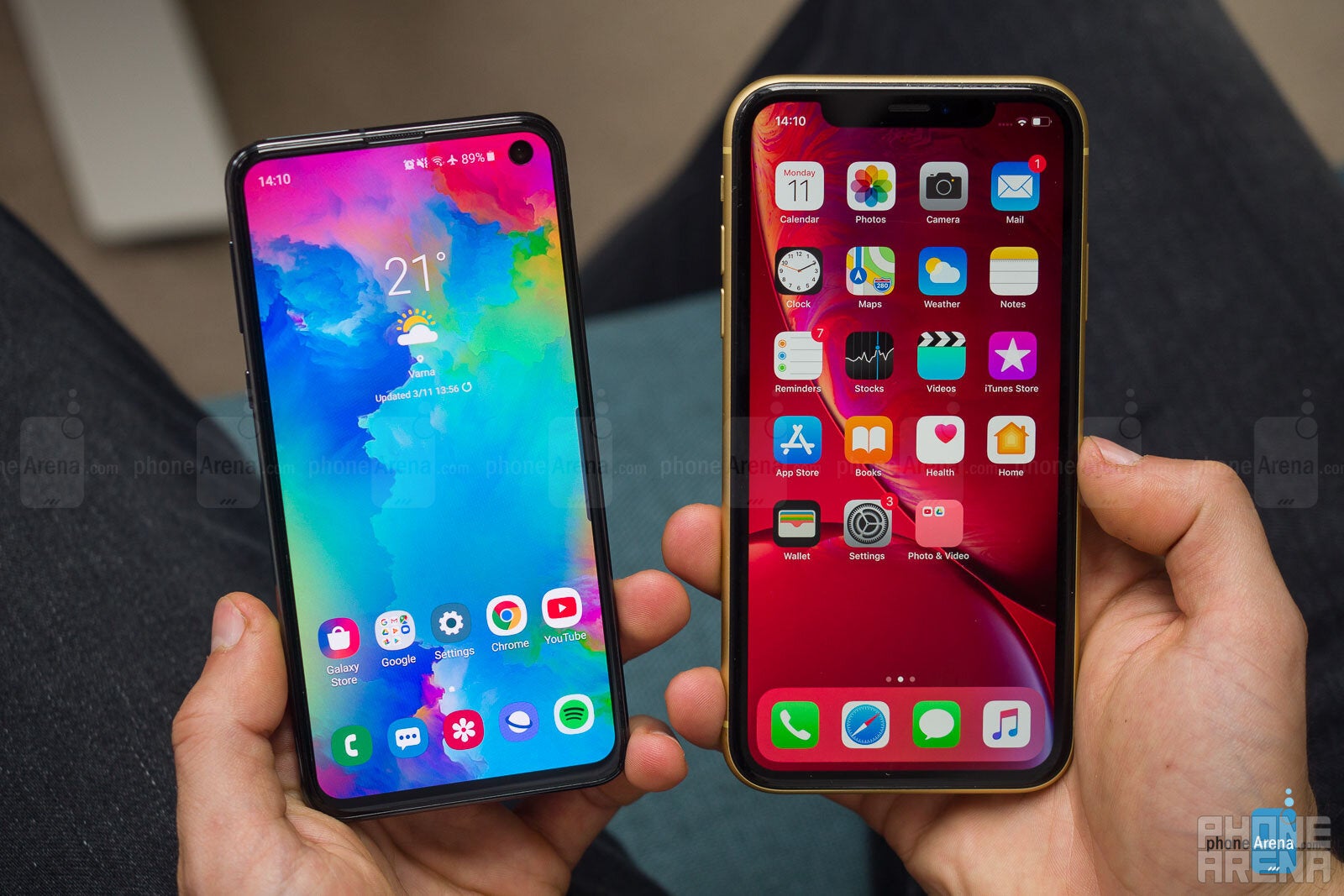
Apple’s phones run on iOS. Of course — the exclusive software experience, which you only get if you have an Apple device. iOS is stable fast and fluid, yet not without its faults. It’s not big on customizability and it’s not really built for multi-tasking. Forget about picture-in-picture, split-screen, or rapidly switching between apps who happen to stay active in the background.
Samsung’s One UI is generously spread on top of Android 9 Pie on the Galaxy S10 series. That means Theme store, icon packs, split screen and PiP, insane customizability and a bucket-load of features. An Android phone is a poweruser’s playground and the Samsung devices just offer you all they can. Again, it’s a love-it-or-hate-it thing.
Let’s take a closer look at the different phones:
Obviously, these two will be compared fairly regularly. Not because they are incredibly similar but because they are the “cheapest option” in their respective group. However, they are very different beasts.
For example, the iPhone 11 is not the smallest iPhone you can buy — it sits between the iPhone Pro and iPhone Pro Max in terms of size, with a nice 6.1-inch screen, which is both comfortable and not way-too-huge. The Galaxy S10e, on the other hand, is Samsung’s compact flagship — it’s so small it’s cute and it’s so light you will love how easily pocketable it is (I am not implying you try to steal one, by the way).
In terms of screen quality — it’s an easy thing to call. The Galaxy S10e uses Samsung’s top-tier Super AMOLED panel, while the iPhone 11 has an LCD screen. And yes, Apple’s LCD is outstanding in terms of detail, color-reproduction, and viewing angles… but Samsung’s Super AMOLED is just amazing. The little S10e crams more pixels in its smaller display and it looks so, so sharp! The iPhone 11 will, presumably, have the very same screen like the iPhone XR. And previous experience tells us that it’s very good… but not extraordinary.
There is also the very different manner of how you unlock the devices — the Galaxy S10e has a fingerprint scanner embedded into its power button on the side while the iPhone 11 uses Apple’s Face ID, same as its more expensive brethren. Which one is more comfortable? It has to be Face ID, really — while it may have its quirks on rare occasions, it is generally very reliable and there’s nothing like having your phone unlock the instant you look at it. To top it off, Apple touted that it’s now upgraded and can detect your face at wider angles, which we are impatient to test!
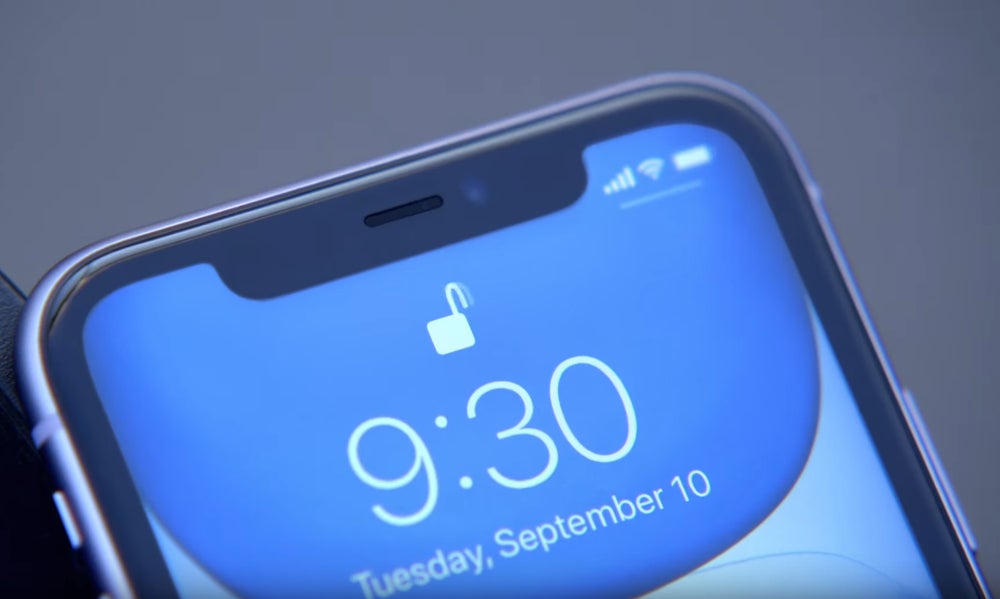
The Galaxy S10e’s side-mounted fingerprint scanner is fast and accurate, but not as comfortable to use. Consider this — if the device is on a mount or lying on a table, you’d almost always need to fidget with it, pick it up, or at least move it to hit that scanning sweet spot. This is why in-display fingerprint scanners are so highly-coveted — you can simply touch the front of your device to unlock it.
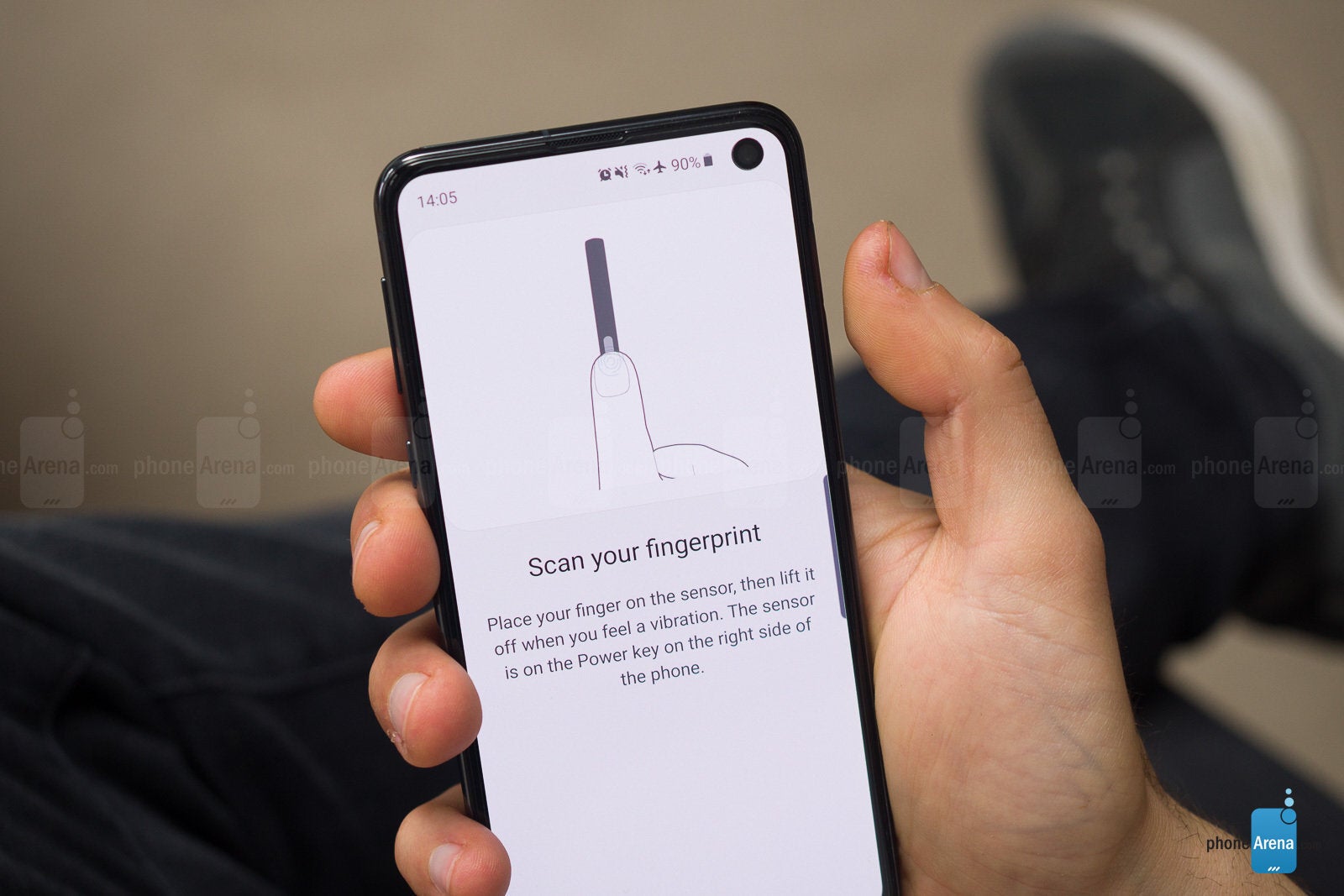
In the camera department, we have direct competition. Both phones are outfitted with a regular wide-angle and an ultra-wide-angle camera. They are fairly close in specs — the iPhone 11 has 12 MP sensors under both lenses, while the S10e has a 12 MP main sensor and a 16 MP one for the ultra-wide camera. The S10e also has slightly wider apertures on both sensors to provide a shallower depth of field and let more light in.
Really, we can look at the specs on paper all we like, but we will have to wait to get our hands on an iPhone 11 for this one. Apple talked a lot about camera improvements, but we all know that Samsung’s flagships are no slouches in the camera department as well. Needless to say, both phones will have great cameras… Which one is better? To be continued…
Moving on to “actual flagship” land. These devices represent their respective lines best — they pack the full technological punch, no corners were cut, no features were omitted (*ahem* not counting the Galaxy S10 5G’s ToF camera). Interestingly enough, we see a slight role-reversal here — the Samsung phone is bigger than the Apple phone, as opposed to the previous category.
But not uncomfortably big… the Galaxy S10 is incredibly thin and light and just a joy to hold and use. Its 6.1-inch screen sits at that threshold of being large enough to enjoy media on, while not crossing into gargantuan land. It’s on the verge of being called a “big phone” but somehow manages to escape that category with its ergonomic design. Its fingerprint scanner is on the front — an ultrasonic scanner hidden under the display in that comfortable position.
The iPhone 11 Pro is almost the same size as the iPhone XS. It’s very, very slightly bigger and thicker, but we are talking halves of millimeters here. So, judging by previous experience, the iPhone 11 Pro is that super-pocketable, comfy-to-hold, one-hand-use iPhone. It’s not exactly a multimedia machine with that 5.8-inch screen, and it’s not the best for two-thumb-texting if you have bigger hands. Also, don’t worry, this one has an OLED panel now, which is gorgeous. It’s essentially the most powerful iPhone, squished into a fairly compact shell.
In the camera department, we have the same setup on both devices — ultra-wide-angle, wide-angle, and telephoto cameras all around. And, as stated earlier, we can’t say which one is “better” before we get to compare both phones directly. Needless to say, both will be great performers. Now, we have some different modes — the Galaxy S10 does have that Super Slow-mo… bu-u-ut, it seems that Apple has opened up the iPhone 11 Pro’s triple camera API for developers to accomplish amazing things. On stage, the makers of popular camera app Filmic showed how they can use the iPhone 11 Pro to record a video using all of the phone’s cameras simultaneously. Let me repeat — recording video from the wide-angle, telephoto, ultra-wide-angle, and selfie camera all at the same time.
This is powerful, to say the least, and is probably just the beginning of yet another age of crazy new camera apps coming out exclusively for the iPhone. iOS 13 is now also getting a native video editor, which is cool, although iOS had pretty good ones already provided by 3rd party developers on the App Store. Samsung’s Galaxy S10 is just now gaining up in that particular field thangs to Adobe’s Premiere Rush finally being available for Android. And it still doesn’t offer vital features, such as keyframes — something that iOS apps have.
In other words, image quality is one thing. But what you can do with said images on each platform is another… and iOS has been in the lead here for a while. Just saying.
Well, this iPhone definitely wins the “longest name ever” award. That aside, how does it compare to the Big Galaxy?
They are incredibly close, actually. In terms of dimensions, they are very comparable, with the iPhone 11 Pro Max being slightly wider. But do you know where the iPhone definitely, undoubtedly loses? It is so heavy!
The iPhone 11 Pro Max is listed as weighing 228 grams. That’s 18 grams more than last year’s iPhone XS Max and a whopping 51 grams more than the Galaxy S10+. And 50 g may not sound like a lot on paper, but it actually is — especially when handling your 6.5-inch, glass phone.
In other words, in terms of ergonomics, the Galaxy S10+ nails it here, as it’s thin, light, and a pleasure to hold. Last year’s iPhone XS Max was already a bit meaty, the iPhone 11 Pro Max will definitely be a challenge to use without a case.
In terms of camera? See above… verdict is still out. No doubt the iPhone 11 Pro Max will take some awesome photos, but we don’t know if they will be better than the Galaxy S10+ yet. What we do know is that external video-editing apps are better… and that’s kind of sad.
We still need to get our hands on some iPhone 11 units, take them out to the streets and compare them to the Galaxies in daily routines. But iOS is iOS and the iPhone experience has been pretty solid and predictable year after year. Apple promised some insane battery life boosts, which we are eager to see — the iPhone 11 Pro Max was touted to be able to last 5 hours more than an iPhone XS Max. Pretty big commitment there! But if it turns out to be true, Samsung will be in trouble.
Then, there’s The Ecosystem argument. See, Apple doesn’t just sell you the iPhone. It’s selling you a part of a bigger puzzle — the Apple ecosystem puzzle. MacBooks, iMacs, the Apple Watch, the HomePod, the awesome AirPods, and — of course — services, such as Apple Music, TV+, and Apple Arcade. An established spiderweb of great products, which happen to play off of one another seamlessly. Samsung is still a bit behind on that aspect, but if you are dead-set on staying away from Apple’s Walled Garden, fret not — there’s hope for you! Samsung’s own Galaxy Watch series is probably the best watch to get on the Android side (technically, they run Tizen), the Galaxy Buds are pretty good, and it’s awesome that you can charge them wirelessly with your Galaxy phone. Sammy has been building towards a partnership with Microsoft and the end result is integration between One UI and Windows, which allows screen mirroring and the upcoming PlayGalaxy Link for game streaming. And Samsung does have its own plethora of household items that can connect through your Galaxy.
So, in other words, while both series of phones are pretty great… this battle extends to more than just them. Each choice makes a bunch of other products available to you, which further complicates the choice. Which ecosystem would you invest in?
Hardware vs hardware, iOS vs One UI
Alright, so it’s always been a bit weird to compare hardware between iPhones and competitors. Apple, obviously, uses its own chips — the Apple A13 Bionic in the case of the iPhone 11 — and they’ve always been stellar in terms of performance. The Galaxy S10 series use a Qualcomm Snapdragon 855, which is also great… not “as” great, but a pretty powerful system-on-chip none the less. We don’t have any benchmarks for Apple’s new phones yet, but here’s how the iPhone XS’s chip compared to the Galaxy S10:
We don’t know how much RAM the new iPhone pack just yet, but here’s some info from the past. The iPhone XR had 3 GB of RAM, while the iPhone XS and XS Max had 4 GB of RAM. Chances that they would get any big upgrade this year are slim. The Galaxy phones… well, they go big — 8 GB RAM on the starting tiers for all of them.
But here’s the crux of the situation — iOS and Android treat RAM very, very differently. So, it’s kind of hard to compare the raw specs as they are. But that segues perfectly into:
Software

Apple’s phones run on iOS. Of course — the exclusive software experience, which you only get if you have an Apple device. iOS is stable fast and fluid, yet not without its faults. It’s not big on customizability and it’s not really built for multi-tasking. Forget about picture-in-picture, split-screen, or rapidly switching between apps who happen to stay active in the background.
Still, the fact that Apple makes the software and hardware here allows it to squeeze out great performance and give app developers a pretty good platform to make great apps and games for. So, there’s pros and cons — some people love iOS, some hate it, and then there are those who are infinitely torn and always in flux — sometimes they drop it, sometimes they go back to it.
Samsung’s One UI is generously spread on top of Android 9 Pie on the Galaxy S10 series. That means Theme store, icon packs, split screen and PiP, insane customizability and a bucket-load of features. An Android phone is a poweruser’s playground and the Samsung devices just offer you all they can. Again, it’s a love-it-or-hate-it thing.
|
|
|
| Apple iPhone 11 | Samsung Galaxy S10e |
Display
| Size | |
|---|---|
| 6.1-inch, 80.04% screen-to-body | 5.8-inch, 83.35% screen-to-body |
| Type | |
| IPS LCD, 625 nits | Dynamic AMOLED, HDR |
| Resolution | |
| 1792x828px, 19.5:9 ratio, 324 PPI | 2280x1080px, 19:9 ratio, 438 PPI |
| Protection | |
| Corning Gorilla Glass 6 | |
| Features | |
| Oleophobic coating | |
Camera
| Rear | |
|---|---|
| Dual camera | Dual camera |
| Main camera | |
| 12 MP (Sapphire crystal lens cover, OIS, PDAF) Aperture size: F1.8 Focal length: 26 mm Sensor size: 1/2.55" Pixel size: 1.4 μm | 12 MP (OIS, PDAF) Aperture size: F1.5/F2.4 Focal length: 26 mm Sensor size: 1/2.55" Pixel size: 1.4 μm |
| Second camera | |
| 12 MP (Ultra-wide, Sapphire crystal lens cover) Aperture size: F2.4 Focal Length: 13 mm |
16 MP (Ultra-wide) Aperture size: F2.2 Focal Length: 12 mm Sensor size: 1/3.1" Pixel size: 1 μm |
| Flash | |
| Quad LED | LED |
| Video recording | |
| 4K UHD (60 fps), 1080p (240 fps), 720p OIS, Time-lapse video, Continuous autofocus, Picture-taking during video recording | 4K UHD (60 fps), 1080p (240 fps), 720p (960 fps) HDR, Time-lapse video, Hyperlapse, Picture-taking during video recording, Video light, EIS, Video calling, Video sharing |
| Front | |
| 12 MP (EIS, HDR, Slow-motion videos) Video capture: 4K UHD (60 fps) |
10 MP (Autofocus, HDR) Video capture: 4K UHD |
Design
| Dimensions | |
|---|---|
| 5.94 x 2.98 x 0.33 inches 150.9 x 75.7 x 8.3 mm |
5.60 x 2.75 x 0.31 inches 142.2 x 69.9 x 7.9 mm |
| Weight | |
| 6.84 oz / 194.0 g | 5.29 oz / 150.0 g |
| Materials | |
| Back: Glass Frame: Aluminum | Back: Glass (Corning Gorilla Glass 5) Frame: Aluminum |
| Resistance | |
| Water, Dust; IP68 | Water, Dust; IP68 |
| Biometrics | |
| 3D Face unlock | 2D Face unlock, Fingerprint (touch) |
| Keys | |
| Left: Volume control, Other; Right: Lock/Unlock key | Left: Volume control; Right: Lock/Unlock key |
| Colors | |
| Black, Purple, Yellow, Green, Red, White | Prism blue, Prism black, Prism white, Prism green, Canary yellow, Flamingo pink, Prism silver |
Hardware
| System chip | |
|---|---|
| Apple A13 Bionic APL1W85 (7 nm) | Snapdragon 855 (7 nm) |
| Processor | |
| Hexa-core Lightning and Thunde |
Octa-core Kryo 485 |
| GPU | |
| Apple-designed 4 core | Adreno 640 |
| Memory | |
| 4GB (LPDDR4)/64GB (NVMe) 4GB/128GB 4GB/256GB |
6GB (LPDDR4)/128GB 8GB/256GB |
| Storage expansion | |
| not expandable | microSDXC up to 512 GB |
| OS | |
| iOS (15.x, 14.x, 13.x) | Android (11, 10, 9.0 Pie) |
Battery
| Type | |
|---|---|
| 3110 mAh, Li - Ion | 3100 mAh, Li - Ion |
| Charging | |
| USB Power Delivery Qi wireless charging |
Qualcomm Quick Charge 2.0, USB Power Delivery, Samsung Adaptive Fast Charging Qi and Powermat wireless charging, Reverse wireless charging |
| Charge speed | |
| Wired: 18.0W Wireless: 7.5W |
|
See the full
Apple iPhone 11 vs Samsung Galaxy S10e specs comparison
or compare them to other phones using our
Phone Comparison tool
Obviously, these two will be compared fairly regularly. Not because they are incredibly similar but because they are the “cheapest option” in their respective group. However, they are very different beasts.
For example, the iPhone 11 is not the smallest iPhone you can buy — it sits between the iPhone Pro and iPhone Pro Max in terms of size, with a nice 6.1-inch screen, which is both comfortable and not way-too-huge. The Galaxy S10e, on the other hand, is Samsung’s compact flagship — it’s so small it’s cute and it’s so light you will love how easily pocketable it is (I am not implying you try to steal one, by the way).
In terms of screen quality — it’s an easy thing to call. The Galaxy S10e uses Samsung’s top-tier Super AMOLED panel, while the iPhone 11 has an LCD screen. And yes, Apple’s LCD is outstanding in terms of detail, color-reproduction, and viewing angles… but Samsung’s Super AMOLED is just amazing. The little S10e crams more pixels in its smaller display and it looks so, so sharp! The iPhone 11 will, presumably, have the very same screen like the iPhone XR. And previous experience tells us that it’s very good… but not extraordinary.

The Galaxy S10e’s side-mounted fingerprint scanner is fast and accurate, but not as comfortable to use. Consider this — if the device is on a mount or lying on a table, you’d almost always need to fidget with it, pick it up, or at least move it to hit that scanning sweet spot. This is why in-display fingerprint scanners are so highly-coveted — you can simply touch the front of your device to unlock it.

In the camera department, we have direct competition. Both phones are outfitted with a regular wide-angle and an ultra-wide-angle camera. They are fairly close in specs — the iPhone 11 has 12 MP sensors under both lenses, while the S10e has a 12 MP main sensor and a 16 MP one for the ultra-wide camera. The S10e also has slightly wider apertures on both sensors to provide a shallower depth of field and let more light in.
Really, we can look at the specs on paper all we like, but we will have to wait to get our hands on an iPhone 11 for this one. Apple talked a lot about camera improvements, but we all know that Samsung’s flagships are no slouches in the camera department as well. Needless to say, both phones will have great cameras… Which one is better? To be continued…
|
|
|
| Apple iPhone 11 Pro | Samsung Galaxy S10 |
Display
| Size | |
|---|---|
| 5.8-inch, 80.37% screen-to-body | 6.1-inch, 88.66% screen-to-body |
| Type | |
| OLED, HDR, 800 nits | Dynamic AMOLED, HDR |
| Resolution | |
| 2436x1125px, 19.5:9 ratio, 463 PPI | 3040x1440px, 19:9 ratio, 550 PPI |
| Protection | |
| Corning Gorilla Glass 6 | |
| Features | |
| HDR support, Oleophobic coating, Scratch-resistant glass, Ambient light sensor, Proximity sensor | |
Camera
| Rear | |
|---|---|
| Triple camera | Triple camera |
| Main camera | |
| 12 MP (Sapphire crystal lens cover, OIS, PDAF) Aperture size: F1.8 Focal length: 26 mm Sensor size: 1/2.55" Pixel size: 1.4 μm | 12 MP (OIS, PDAF) Aperture size: F1.5/F2.4 Focal length: 26 mm Sensor size: 1/2.55" Pixel size: 1.4 μm |
| Second camera | |
| 12 MP (Ultra-wide) Aperture size: F2.4 Focal Length: 13 mm |
16 MP (Ultra-wide) Aperture size: F2.2 Focal Length: 12 mm Sensor size: 1/3.1" Pixel size: 1 μm |
| Third camera | |
| 12 MP (Telephoto, Sapphire crystal lens cover, OIS, PDAF) Optical zoom: 2.0x Aperture size: F2.0 Focal Length: 52 mm Sensor size: 1/3.4" Pixel size: 1 μm | 12 MP (Telephoto, OIS, PDAF) Optical zoom: 2.0x Aperture size: F2.4 Focal Length: 52 mm Sensor size: 1/3.6" Pixel size: 1 μm |
| Flash | |
| Quad LED | LED |
| Video recording | |
| 4K UHD (60 fps), 1080p (240 fps), 720p OIS, Time-lapse video, Continuous autofocus, Picture-taking during video recording | 4K UHD (60 fps), 1080p (240 fps), 720p (960 fps) HDR, Time-lapse video, Hyperlapse, Picture-taking during video recording, Video light, EIS, Video calling, Video sharing |
| Front | |
| 12 MP (EIS, HDR, Slow-motion videos) Video capture: 4K UHD (60 fps) |
10 MP (Autofocus, HDR) Video capture: 4K UHD |
Design
| Dimensions | |
|---|---|
| 5.67 x 2.81 x 0.32 inches 144 x 71.4 x 8.1 mm |
5.90 x 2.77 x 0.31 inches 149.9 x 70.4 x 7.8 mm |
| Weight | |
| 6.63 oz / 188.0 g | 5.54 oz / 157.0 g |
| Materials | |
| Back: Glass Frame: Stainless steel |
Back: Glass (Corning Gorilla Glass 5) Frame: Aluminum |
| Resistance | |
| Water, Dust; IP68 | Water, Dust; IP68 |
| Biometrics | |
| 3D Face unlock | 2D Face unlock, Ultrasonic in-screen fingerprint |
| Keys | |
| Left: Volume control, Other; Right: Lock/Unlock key | Left: Volume control, Other; Right: Lock/Unlock key |
| Colors | |
| Gold, Silver, Space gray, Midnight green | Prism blue, Prism black, Prism white, Prism green, Flamingo pink |
Hardware
| System chip | |
|---|---|
| Apple A13 Bionic APL1W85 (7 nm) | Snapdragon 855 (7 nm) |
| Processor | |
| Hexa-core Lightning and Thunde |
Octa-core Kryo 485 |
| GPU | |
| Apple-designed 4 core | Adreno 640 |
| Memory | |
| 4GB (LPDDR4)/64GB (NVMe) 4GB/256GB 4GB/512GB |
8GB (LPDDR4)/128GB 8GB/512GB |
| Storage expansion | |
| not expandable | microSDXC up to 512 GB |
| OS | |
| iOS (15.x, 14.x, 13.x) | Android (11, 10, 9.0 Pie) |
Battery
| Type | |
|---|---|
| 3046 mAh, Li - Ion | 3400 mAh, Li - Ion |
| Charging | |
| USB Power Delivery Qi wireless charging |
Qualcomm Quick Charge 2.0, USB Power Delivery, Samsung Adaptive Fast Charging Qi and Powermat wireless charging, Reverse wireless charging |
| Charge speed | |
| Wired: 18.0W Wireless: 7.5W |
|
See the full
Apple iPhone 11 Pro vs Samsung Galaxy S10 specs comparison
or compare them to other phones using our
Phone Comparison tool
Moving on to “actual flagship” land. These devices represent their respective lines best — they pack the full technological punch, no corners were cut, no features were omitted (*ahem* not counting the Galaxy S10 5G’s ToF camera). Interestingly enough, we see a slight role-reversal here — the Samsung phone is bigger than the Apple phone, as opposed to the previous category.
But not uncomfortably big… the Galaxy S10 is incredibly thin and light and just a joy to hold and use. Its 6.1-inch screen sits at that threshold of being large enough to enjoy media on, while not crossing into gargantuan land. It’s on the verge of being called a “big phone” but somehow manages to escape that category with its ergonomic design. Its fingerprint scanner is on the front — an ultrasonic scanner hidden under the display in that comfortable position.
In the camera department, we have the same setup on both devices — ultra-wide-angle, wide-angle, and telephoto cameras all around. And, as stated earlier, we can’t say which one is “better” before we get to compare both phones directly. Needless to say, both will be great performers. Now, we have some different modes — the Galaxy S10 does have that Super Slow-mo… bu-u-ut, it seems that Apple has opened up the iPhone 11 Pro’s triple camera API for developers to accomplish amazing things. On stage, the makers of popular camera app Filmic showed how they can use the iPhone 11 Pro to record a video using all of the phone’s cameras simultaneously. Let me repeat — recording video from the wide-angle, telephoto, ultra-wide-angle, and selfie camera all at the same time.
In other words, image quality is one thing. But what you can do with said images on each platform is another… and iOS has been in the lead here for a while. Just saying.
|
|
|
| Apple iPhone 11 Pro Max | Samsung Galaxy S10+ |
Display
| Size | |
|---|---|
| 6.5-inch, 84.52% screen-to-body | 6.4-inch, 88.63% screen-to-body |
| Type | |
| OLED, HDR, 800 nits | Dynamic AMOLED, HDR |
| Resolution | |
| 2688x1242px, 19.5:9 ratio, 456 PPI | 3040x1440px, 19:9 ratio, 522 PPI |
| Protection | |
| Corning Gorilla Glass 6 | |
| Features | |
| HDR support, Oleophobic coating, Scratch-resistant glass, Ambient light sensor, Proximity sensor | |
Camera
| Rear | |
|---|---|
| Triple camera | Triple camera |
| Main camera | |
| 12 MP (Sapphire crystal lens cover, OIS, PDAF) Aperture size: F1.8 Focal length: 26 mm Sensor size: 1/2.55" Pixel size: 1.4 μm | 12 MP (OIS, PDAF) Aperture size: F1.5/F2.4 Focal length: 26 mm Sensor size: 1/2.55" Pixel size: 1.4 μm |
| Second camera | |
| 12 MP (Telephoto, Sapphire crystal lens cover, OIS, PDAF) Optical zoom: 2.0x Aperture size: F2.0 Focal Length: 52 mm Sensor size: 1/3.4" Pixel size: 1 μm | 16 MP (Ultra-wide) Aperture size: F2.2 Focal Length: 12 mm Sensor size: 1/3.1" Pixel size: 1 μm |
| Third camera | |
| 12 MP (Ultra-wide, Sapphire crystal lens cover) Aperture size: F2.4 Focal Length: 13 mm |
12 MP (Telephoto, OIS, PDAF) Optical zoom: 2.0x Aperture size: F2.4 Focal Length: 52 mm Sensor size: 1/3.6" Pixel size: 1 μm |
| Flash | |
| Quad LED | LED |
| Video recording | |
| 4K UHD (60 fps), 1080p (240 fps), 720p OIS, Time-lapse video, Continuous autofocus, Picture-taking during video recording |
4K UHD (60 fps), 1080p (240 fps), 720p (960 fps) HDR, Time-lapse video, Hyperlapse, EIS, Video calling, Video sharing |
| Front | |
| 12 MP (EIS, HDR, Slow-motion videos) Video capture: 4K UHD (60 fps) |
10 MP (Dual-Camera, Autofocus, HDR) Video capture: 4K UHD |
Design
| Dimensions | |
|---|---|
| 6.22 x 3.06 x 0.32 inches 158 x 77.8 x 8.1 mm |
6.20 x 2.92 x 0.31 inches 157.6 x 74.1 x 7.8 mm |
| Weight | |
| 7.97 oz / 226.0 g | 6.17 oz / 175.0 g |
| Materials | |
| Back: Glass Frame: Stainless steel |
Back: Glass (Corning Gorilla Glass 5) Frame: Aluminum |
| Resistance | |
| Water, Dust; IP68 | Water, Dust; IP68 |
| Biometrics | |
| 3D Face unlock | 2D Face unlock, Ultrasonic in-screen fingerprint |
| Keys | |
| Left: Volume control, Lock/Unlock key; Right: Lock/Unlock key | Left: Volume control, Other; Right: Lock/Unlock key |
| Colors | |
| Gold, Silver, Space gray, Midnight green | Prism blue, Prism black, Prism white, Prism green, Flamingo pink |
Hardware
| System chip | |
|---|---|
| Apple A13 Bionic APL1W85 (7 nm) | Snapdragon 855 (7 nm) |
| Processor | |
| Hexa-core Lightning and Thunde |
Octa-core Kryo 485 |
| GPU | |
| Apple-designed 4 core | Adreno 640 |
| Memory | |
| 4GB (LPDDR4)/64GB (NVMe) 4GB/256GB 4GB/512GB |
8GB (LPDDR4)/128GB 8GB/512GB 12GB/1000GB |
| Storage expansion | |
| not expandable | microSDXC up to 512 GB |
| OS | |
| iOS (15.x, 14.x, 13.x) | Android (11, 10, 9.0 Pie) |
Battery
| Type | |
|---|---|
| 3969 mAh, Li - Ion | 4100 mAh, Li - Ion |
| Charging | |
| USB Power Delivery Qi wireless charging |
Qualcomm Quick Charge 2.0, USB Power Delivery, Samsung Adaptive Fast Charging Qi and Powermat wireless charging, Reverse wireless charging |
| Charge speed | |
| Wired: 18.0W Wireless: 7.5W |
|
See the full
Apple iPhone 11 Pro Max vs Samsung Galaxy S10+ specs comparison
or compare them to other phones using our
Phone Comparison tool
Well, this iPhone definitely wins the “longest name ever” award. That aside, how does it compare to the Big Galaxy?
They are incredibly close, actually. In terms of dimensions, they are very comparable, with the iPhone 11 Pro Max being slightly wider. But do you know where the iPhone definitely, undoubtedly loses? It is so heavy!
The iPhone 11 Pro Max is listed as weighing 228 grams. That’s 18 grams more than last year’s iPhone XS Max and a whopping 51 grams more than the Galaxy S10+. And 50 g may not sound like a lot on paper, but it actually is — especially when handling your 6.5-inch, glass phone.
In other words, in terms of ergonomics, the Galaxy S10+ nails it here, as it’s thin, light, and a pleasure to hold. Last year’s iPhone XS Max was already a bit meaty, the iPhone 11 Pro Max will definitely be a challenge to use without a case.
Expectations
We still need to get our hands on some iPhone 11 units, take them out to the streets and compare them to the Galaxies in daily routines. But iOS is iOS and the iPhone experience has been pretty solid and predictable year after year. Apple promised some insane battery life boosts, which we are eager to see — the iPhone 11 Pro Max was touted to be able to last 5 hours more than an iPhone XS Max. Pretty big commitment there! But if it turns out to be true, Samsung will be in trouble.
Then, there’s The Ecosystem argument. See, Apple doesn’t just sell you the iPhone. It’s selling you a part of a bigger puzzle — the Apple ecosystem puzzle. MacBooks, iMacs, the Apple Watch, the HomePod, the awesome AirPods, and — of course — services, such as Apple Music, TV+, and Apple Arcade. An established spiderweb of great products, which happen to play off of one another seamlessly. Samsung is still a bit behind on that aspect, but if you are dead-set on staying away from Apple’s Walled Garden, fret not — there’s hope for you! Samsung’s own Galaxy Watch series is probably the best watch to get on the Android side (technically, they run Tizen), the Galaxy Buds are pretty good, and it’s awesome that you can charge them wirelessly with your Galaxy phone. Sammy has been building towards a partnership with Microsoft and the end result is integration between One UI and Windows, which allows screen mirroring and the upcoming PlayGalaxy Link for game streaming. And Samsung does have its own plethora of household items that can connect through your Galaxy.
Follow us on Google News
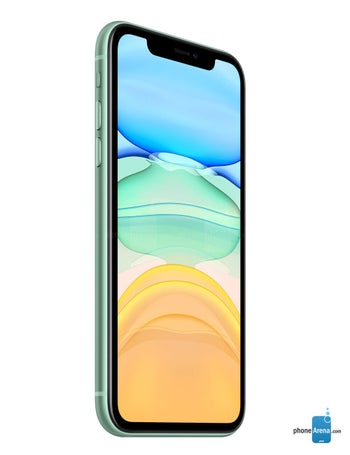
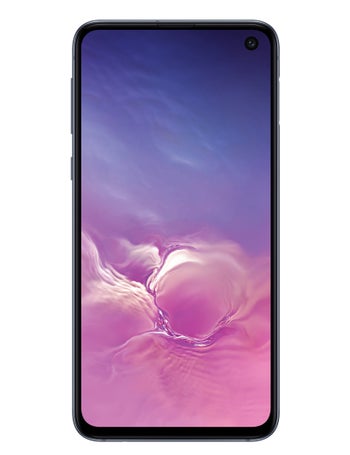




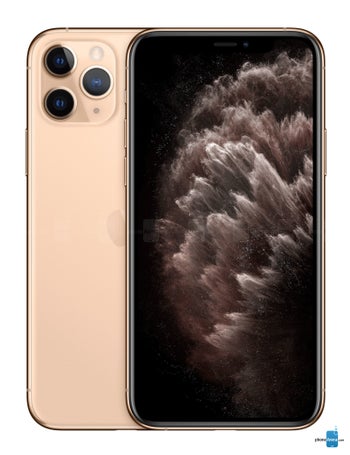
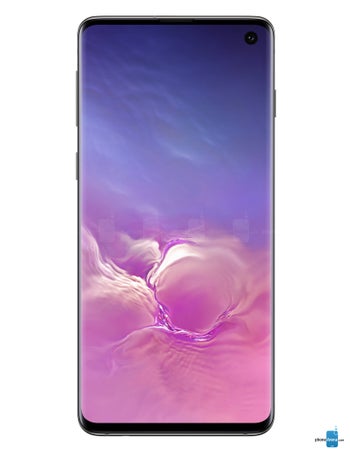
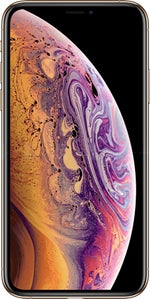



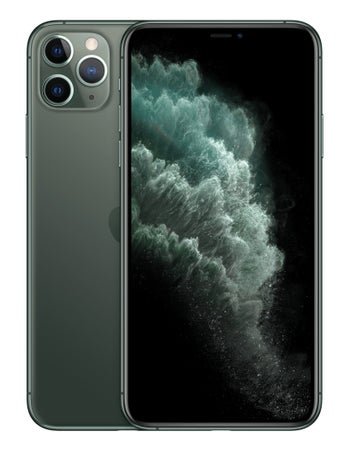

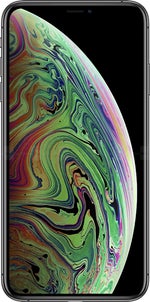




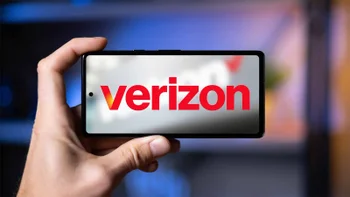
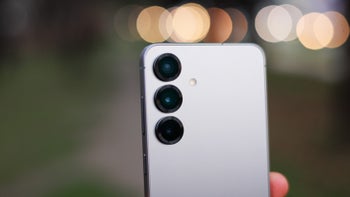
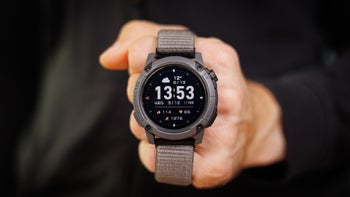
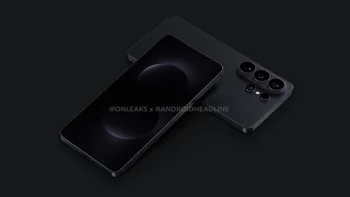

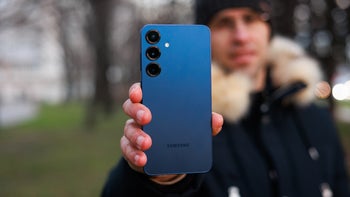


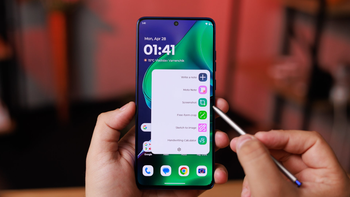
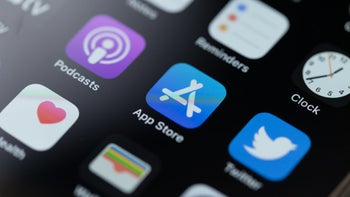

Things that are NOT allowed:
To help keep our community safe and free from spam, we apply temporary limits to newly created accounts: